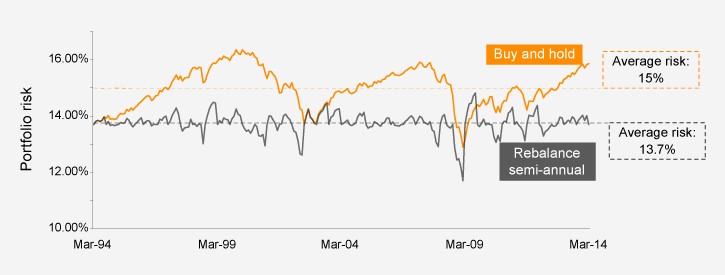Diversifying Your Way To Added Risk
Post on: 2 Май, 2015 No Comment

The concept of diversifying one’s assets is relatively new. Mark Twain said, “Put all your eggs in one basket, and watch that basket.” Twain’s quip was typical of advice to investors before Harry Markowitz demonstrated the power of diversification in the early 1950’s. Even with Markowitz’s evidence and theories, however, it took over 30 years for the idea of diversification to make it main stream.
Today the most common way individual investors diversify is by spreading investments across asset classes. This method is so widely accepted as a risk management tool it’s become a boring convention. As with many boring conventions, most investors haven’t thought much about the question “How do I know if I am diversified?” and “What are the ‘real’ benefits to diversification?”
Most investors assume that they are diversified if their portfolio can be represented by a colorful pie chart with each slice having a different name. The problem is that this “proof” of diversification didn’t work all that well in protecting portfolios during the 2008 financial crisis.
(Source: Wikipedia)
Stop and think about the “pie chart as proof” for a second.
What is an equity, what is fixed income, what are “alternatives”? By and large these asset class descriptions are really just legal definitions and nothing more. For instance, if in 2008 you held a large exposure to Lehman stock and Lehman bonds your real risk didn’t really have much to do with the allocation to stocks and bonds but to Lehman Brothers. Allocating to the colors of a pie chart, and thus to legal definition of an asset class, obscures potentially compounding risks that can haunt a portfolio in a downturn.
So how do you achieve effective diversification? In my opinion, it means taking a look at and diversifying across the underlying sources of risk.
We believe there are four underlying sources of investment risk: (1) company risk, (2) interest rate risk, (3) purchasing power risk and (4) manager skill risk. Allocating to risks as opposed to asset classes is how many institutional investors chose to build their portfolios.
While the strategy has been used by professional investors for over 20 years, like the move to diversification advocated by Markowitz, it could be another 10 years until the retail investor gets access to the risk based approach.
Each risk performs differently in different economic environments. When combined together in a portfolio, losses associated with one risk can be offset with gains associated with a different risk. For instance, company risk can be expressed by buying equities and/or corporate bonds, interest rate risk can be expressed by buying the sovereign bonds of the U.S. or other developed countries.

Generally, but certainly not always, when the economy is hitting bad times, investments tied to interest rate risk will outperform investment tied to company risk. In a period like the mid 1970’s when inflation was rampant, both investments tied to interest rate and company risk performed poorly, but assets tied to inflation risk, like commodities, performed very well.
Some investment managers espouse equal weighting to each of the different risks, a strategy called risk parity. In my opinion, however, it is not always prudent to have a constant weighting to each source of risk.
Tactically changing allocations to reflect the opportunities or risks in the market may benefit your portfolio. As an operating practice I constantly scan markets to identify dislocations/mispricing vis a vis all of the risks mentioned above, and when I see opportunities to profit or avoid losses, make portfolio adjustments.
At the end of the day, diversification is still a good way to reduce the risk of your portfolio without sacrificing the opportunity for returns. Of course, there is no guarantee that a diversified portfolio will enhance overall returns or outperform a non-diversified portfolio. Diversification does not protect against market risk. How you approach such diversification, however, is vitally important. A risk-based approach as opposed to an asset class-based approach is one you should consider.
Jim Cahn is Chief Investment Officer of Wealth Enhancement Advisory Services. the RIA arm of Wealth Enhancement Group. Contact him at jcahn@wealthenhancement.com .














